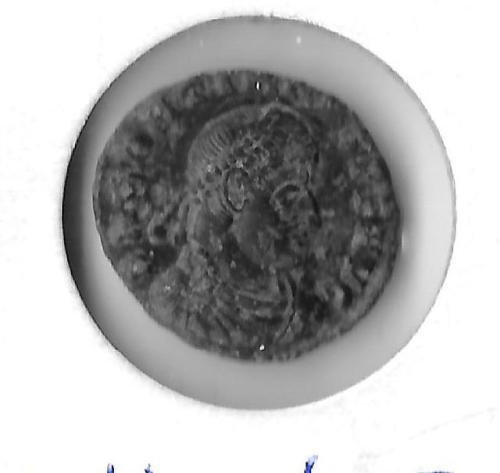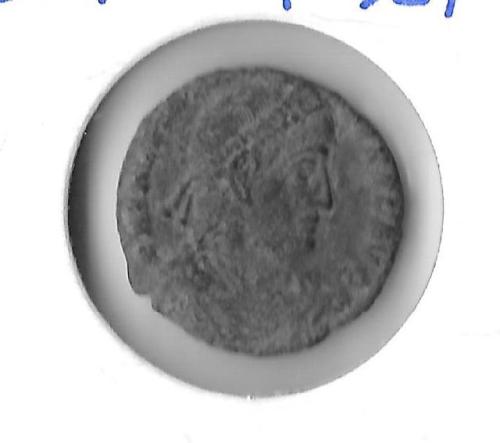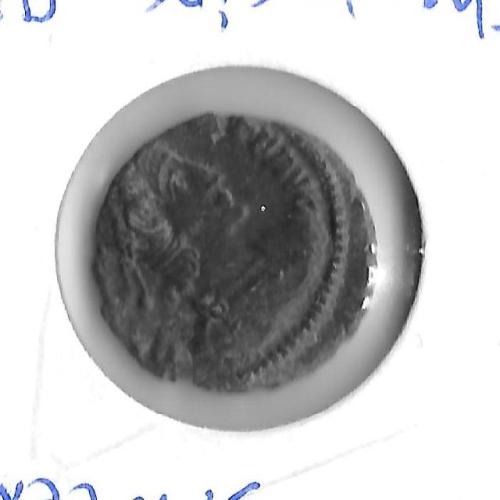peashooter85:My Latest Roman Coin CleansMany of you have messaged me to show some pics of the Roman
peashooter85:My Latest Roman Coin CleansMany of you have messaged me to show some pics of the Roman coins I have cleaned. So here are three of the latest I did that are fairly well detailed. First as to the origins of these coins, most are discovered by metal detector enthusiasts in Europe, North Africa, and the Middle East. Most are bronze, any gold and silver coins would have been picked out. Also they are typically lower grade, the best ones again being picked out. Whats left is sold in bulk to people like me, mostly because it’s not profitable enough to clean and restore each coin. It takes me about 1.5 to 2 hours per coin to clean, and when it comes to low grade stuff it’s just not worth the time and effort for the value you will get out of it. Plus bronze Roman coins are so cheap, Roman asess were basically the equivalent of pennies today. So they were cheap back then and today even 1500 years later they are still cheap and plentiful. The particular batch I ordered from which these coins originate is from a hoard found in Hungary. They date to the late 4th century, shortly before hordes of Goths and Huns would come screaming into the region.Now to the coins themselves. First I have to say these scans do not do justice to the coins. In person the details are much more intelligible and the patina is much nicer. Each coin is roughly the size of a dime. The top coin I identified as being minted by the emperor Gratian. This one was pretty easy to ID as the markings on it are mostly legible, which isn’t really shown well in the scan. The markings are DN GRATIANVS PF AVG. This stands for Dominus Noster (out lord) Gratian Pius Felix (Pius and Blessed) Augustus. The reverse shows the emperor holding a banner, his hand holding down a subjugated captive by the head. This marking was done in celebration of a military victory typically common with the Valentinian dynasty.The second coin is also Gratian. On the obverse the writing on it is not legible, however in the reverse the mint markings are legible, thus I was able to ID it. It too has the “Emperor with Captive) marking.The final coin is a mistrike. Coins back then were struck from a hand engraved die set and a hammer. Basically the person who struck this coin didn’t center it right, and either didn’t notice the mistake, or looked at the disfigured coin, was like “meh, oh well” and threw it in the pile for circulation. The head is halfway cut off and there is no legible script. The reverse is very worn and its marking are not intelligible. I cannot fully ID this coin. However the face on the obverse looks a lot like a younger Valentinian I, Valentinian II, or Theodosius. Considering that two coins from the batch come are Gratian, it can be assumed this one is one of the emperors from the Valentinian dynasty. So Valentinian dynasty of Theodosius, late 4th century. That’s the best I can do. If anyone has any ideas I would like to hear them. To clean the coins I use three main tools: wooden toothpicks, staples, distilled water, and patience. When I get the coins they look like this,So basically I very carefully and meticulously pick away at the crusty dirt until features become shown. When I say meticulously, I mean often a grain at a time, wearing a jewelers helmet with magnifying lens. Like I said before, it typically takes me an hour or two per coin. If the crust is particularly hard, I will straighten out a paper clip to pick away at it. I used to use dental picks but switched to this method because paper clips are dull and made from softer low quality metal, making it much less likely to damage the coin. I find that removing the outer layer of the crust will loosen up the inner layer, allowing the rest to be removed with a toothpick. If the crust is extremely hard, I will soak it in distilled water for some time until it loosens up. I never use cleaners, soaps, or chemicals, I never scrub or use abrasive methods. After picking the dirt off the coin, I then dab it lightly with a cloth soaked in distilled water. One thing to note is that I don’t completely remove all of the dirt. I like to leave my coins a little bit dirty. Remember these coins are worn, and the dirt actually highlights the features of the coin, making them stand out more. Plus to remove the remaining dirt would probably require methods that could damage the coin and ruin the patina. Once clean I coat them in a tiny little bit of Renaissance Wax, which is often used by museums and antiquers for preservation work. Then I seal them in a coin protector.Once the coin is cleaned I ID the coin, which to me is my favorite part of the process. I have some coin guides, but I actually find the website tesorillo.com to be the most helpful. -- source link





